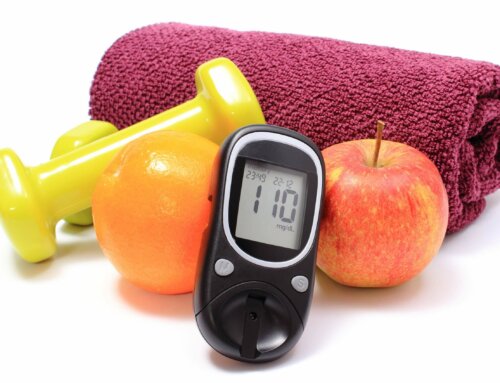Why Exercise?
Physical activity is definitely important for people with diabetes. Exercise helps control blood sugar, blood pressure, and weight. It also increases blood circulation, which in turn can help prevent problems with your heart and nerves.
How Do I Get Started?
First and foremost, talk over your fitness plans with your doctor. Many complications from diabetes will affect the kinds of exercise you can do, as well as the intensity level. If you have foot problems, your doctor may prohibit you from jogging or attending aerobics classes. Your doctor may also advise against intense workouts such as heavy weightlifting, which could cause retinal detachment in patients with diabetic eye problems. Equally important, your doctor can help you determine how the amount of insulin you need will change due to your new fitness routine.
What Exercises Should I Do?
It’s a good idea to do exercises that work both the cardiovascular system and your body’s musculature. In other words, cardio and strength training make the best combination. For cardio, you can do virtually any activity under the sun so long as your doctor approves: walking, swimming, dancing, hiking, and team sports will get your heart pumping. For strength training, gentle stretching, hand weights, and weight machines can help you maintain and increase muscle mass. And the more muscle you have, the more calories you’ll burn!
How Often Should I Exercise?
Try to do some sort of physical activity every day, even if it’s just a short walk or taking the stairs instead of the elevator. Many experts believe that 30 minutes of exercise, 5 days a week or more is the optimum amount of activity. If you can’t do 30 minutes, start out with a shorter duration and add on minutes every week until you reach your goal.
How Can I Exercise Safely?
Follow these guidelines to stay safe while you work out:
- Monitor your blood sugar carefully. If it is below 100 before you work out, have a snack. If your blood sugar is above 300, wait until it drops to work out. Exercise could push levels even higher, which could be dangerous.
- Talk with your doctor about the correct insulin dosage and timing for your fitness routine.
- Wear high-quality shoes and socks that fit properly, and check your feet after each workout for blisters or other problems.
- Drink lots of liquids during a workout, especially water.
- Wear a medical ID tag and keep glucose tablets with you just in case.
- Don’t push yourself too hard. If you feel dizzy, nauseous, heart palpitations or chest pain, or pain in your arm or jaw, stop what you’re doing. If the symptoms don’t pass in 15 minutes, seek help right away.












Leave A Comment